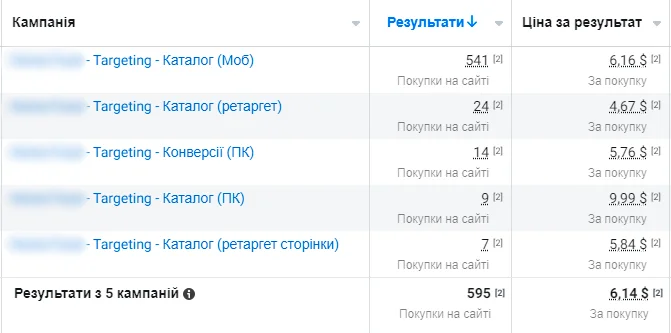

Pitfalls when launching and optimizing advertising in the field of E-Commerce
Client: Ukrainian manufacturer of super-premium and premium-class natural dry food for cats and dogs.
Issues: In March 2023, we were approached by a Ukrainian manufacturer of dry animal feed. The purpose of the advertisement for the client was to send a completed application from the site. Before us, the client independently launched advertising campaigns for conversion, using top products. According to the client, the ad received conversions, but the sales were few.
Duration of work: 10 months.
1. Before running the ad, we checked the Pixel settings in detail and compared its data with Google Analytics data. It turns out that Facebook «sees» a lot more purchases than recorded in GA. After investigating the situation, we realized that the customer's Pixel had an additional «Purchase» event set up that fired during the «Add to Cart» event. This means that the previous advertising campaigns that the client ran received a large number of «sales» that turned out to be «adds to cart». After turning off this additional event, the number of conversions decreased significantly, but the ad is now optimized for the desired event.
2. Later, for the test, we launched two campaigns – Conversions and Catalogs – with optimization for sending a completed application (sale) from the site. For the conversion campaign, we used static creatives with promotional offers and top products, and for catalogs – two groups of products in a circular gallery format (dog food and cat food). After the test launch, the indicators were optimized.

3. In parallel with our work, the client was completing the configuration of a new CRM system, which included, among other things, the analysis of incoming applications. The client stated that campaigns were receiving many leads that were being filled by bots. To find out from which gadgets the «junk» applications come, we divided the campaigns into PC and mobile applications and added special markings to the UTM tags of the ads. It turns out that ads on PCs are the ones getting the most untargeted traffic, so we've turned off ads for those devices. As a result, the number of conversions decreased, and their price increased. However, FB ads now receive only targeted applications.

4. After all the adjustments, although the ad started receiving mostly targeted applications, the cost per conversion increased significantly. To solve this problem, we launched a test campaign with Advantage+ optimization.

In total, we needed two months (March and April) for test runs and optimization. After receiving positive results, we scaled the campaigns and reached the following indicators at the end of 2023: revenue from targeted advertising increased from $22,327 to $63,665 (+185%); cost per conversion decreased from $5.90 to $4.38 (-25%).

A good strategy, perfectly selected digital tools, and their effective application will allow the business to increase profits, grow the customer base, and form recognition and loyalty. Do you want something like that? Contact us.
You have taken the first step towards effective online marketing. Our managers will contact you and consult you soon.